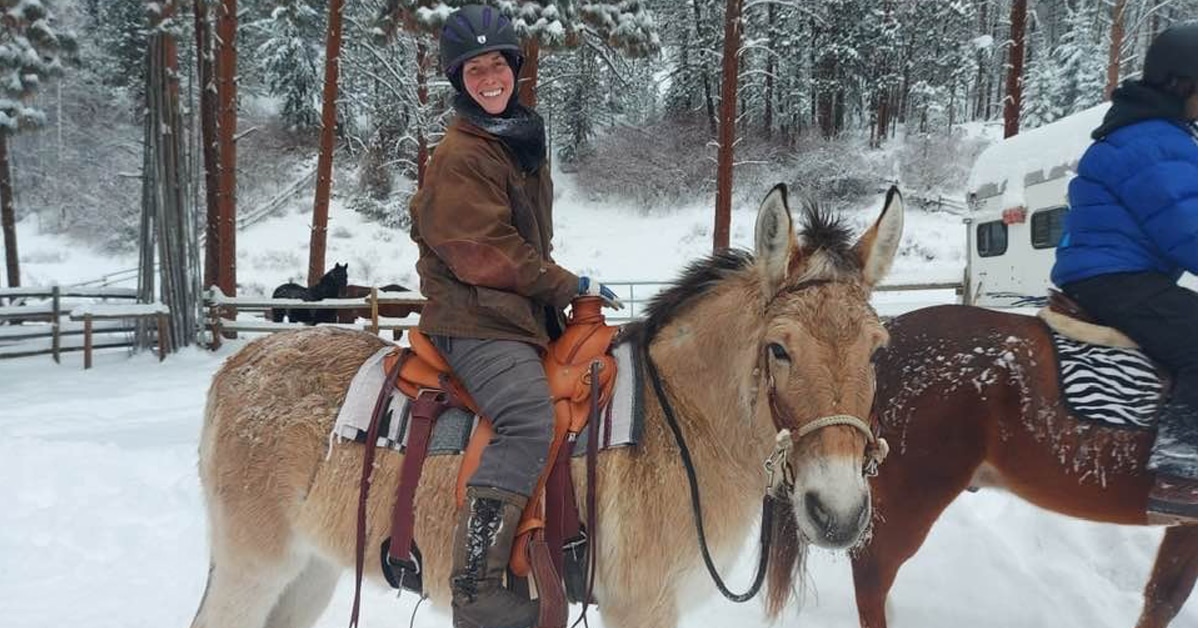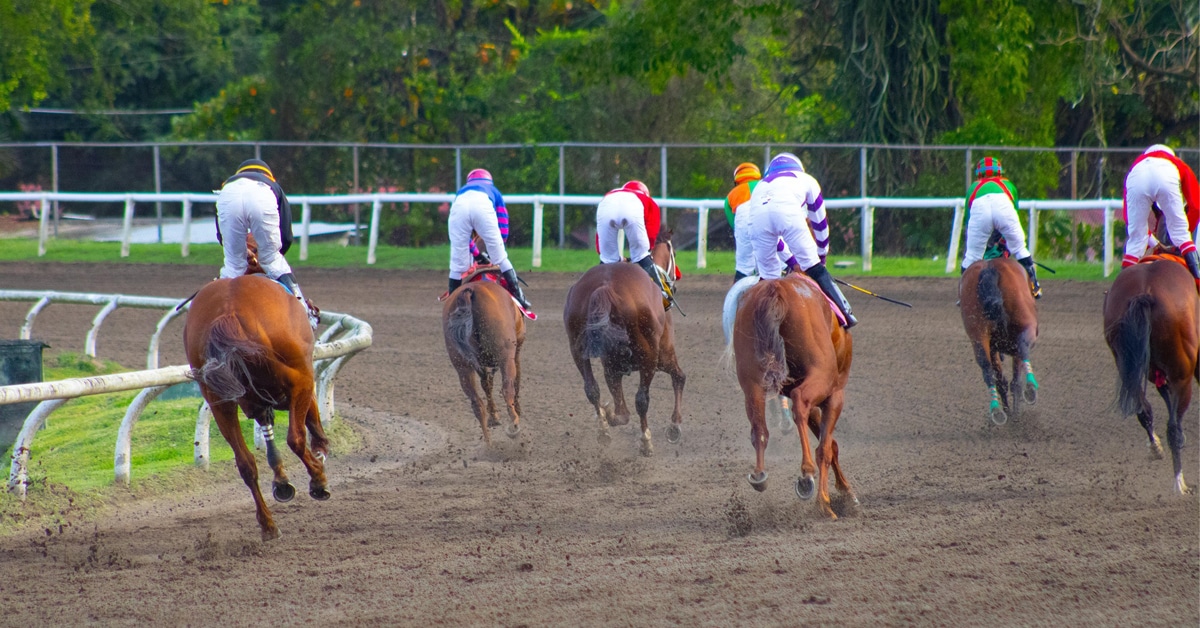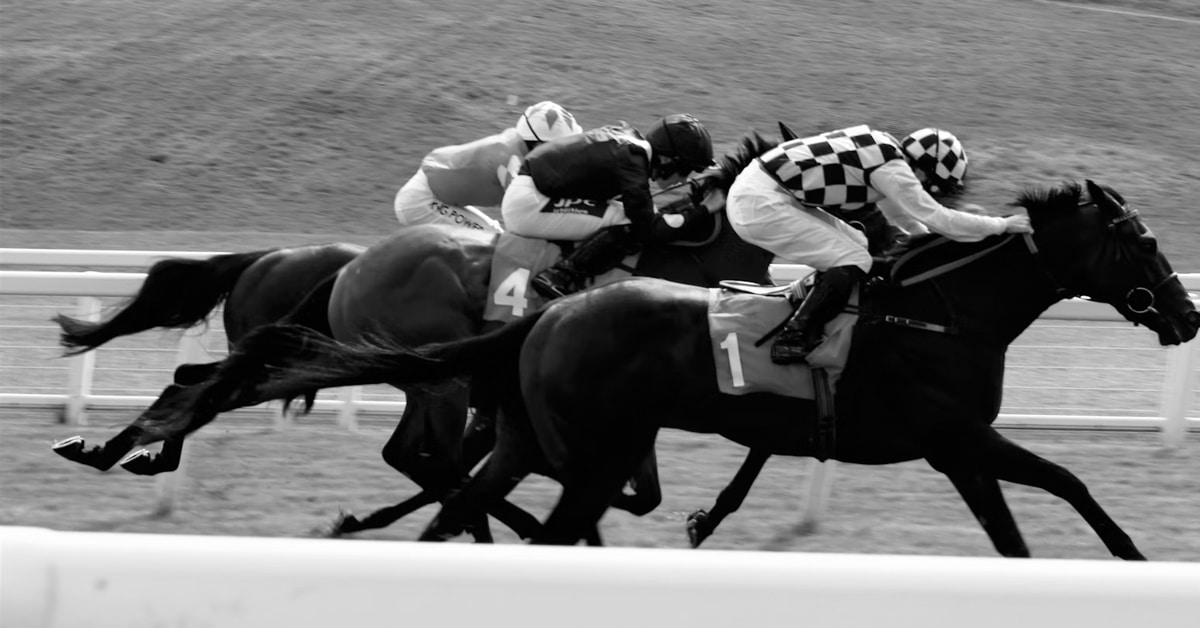The birth of a white foal is a rare event. White horses comprise less than 8% of the equine population and of those, the majority are actually grey. The grey horse is born a solid colour such as black, bay or brown, with dark skin at birth, and some are born with rings around their eyes known as ‘grey goggles’. These goggles disappear as the foal ages and becomes progressively whiter. This is caused by de-pigmentation due to the presence of the grey gene. Grey horses are often confused with white horses.
The white foal, on the other hand, is born with a white coat, pink skin, brown or blue eyes, and does not change colour as it ages. In effect, the white appearance is causes by multiple overlapping white patterns that do not leave any of the base coat colour showing. A giant white spot, if you will!
Some argue that there are no true “white” horses in that white is not a possible base coat colour. A red, bay or black base coat is required with the addition of white spotting genes to get a “white” horse. Double dilute horses who carry two crème genes such as cremello, perlinos, and smokey creams are often mistaken for white. One crème gene on a red or chestnut-based horse will produce a palomino, whereas two will produce a cremello. A buckskin is a bay with one cream allele, while perlino has a bay base coat with two crème alleles. A smokey black has a black base coat with one cream alleles, while smokey cream has two. Cremellos, perlinos and smokey creams are not classified as white and can themselves come with distinguishable white markings such as socks and blazes.
‘Albino’ is another term incorrectly applied to white horses with pink skin and blue eyes. Albinism is a condition in mammals characterized by a total lack of pigmentation, resulting in white hair, pink skin, and red-coloured eyes. There is a rare breed called the American Albino which display a lack of pigmentation in their skin and hair and have blue-coloured eyes; never red eyes, which disqualifies them from categorization as a true albino. Experts maintain that albinism does not exist in horses at this time because they have not found a horse that meets the criteria to be considered an albino.
Lethal White Foal
One particular type of white horse strikes fear into the hearts of all; the dreaded Overo Lethal White Syndrome (OLWS) or Lethal White (LW), in which a completely white foal is either stillborn or dies shortly after birth because its intestines are not fully developed.
It’s important to note that not all white foals are lethal white. Lethal white foals result when each parent contributes a frame overo gene. Pigment is necessary for nerve function in the digestive system and the frame gene inhibits this. If only one frame gene exists (from one parent), there is no cause for concern, as the other non-frame gene is able to sustain normal digestive function on its own. On the other hand, when there are two frame alleles (homozygous, one from each parent), the digestive system is nonfunctional and death will result.
Although a LW foal can be born alive and appear outwardly healthy, within a short period of time, they inevitably suffer a painful death or require humane euthanasia to relieve their agony. There is no medical cure for foals with this condition.
The frame coat pattern shows white patches that do not exceed the back when viewed from the side, with the dark colour “framing” the horse. Not all horses who carry the frame overo gene will exhibit this coat pattern. Solid horses can also carry this allele, therefore it is important to DNA colour test mares and stallions of breeds who commonly carry this gene, in order to prevent a lethal white foal. Quarter horses, Paints, Appaloosas, Tennessee Walkers, American Saddlebreds and Miniature horses are some of the breeds known to carry the frame overo gene.
There is another white gene pattern which can result in undesirable birth defects. The gene responsible for the ‘splash pattern’ plays a role in pigmentation and nerve function of the ears. The cochlea requires melanocytes (cells that make pigment) in order to detect sound. With splash mutations, these cells may be missing and therefore the horse may be deaf.

Puchilingui is one of the foundation sires of Sabino Thoroughbreds in the North America.
Ancestral roots
My coloured Thoroughbred mare, American Iris, recently gave birth to a white colt we named Jack Frost. She has a bay base coat with a dominant white spotting pattern due to the W5 KIT gene mutation. This spontaneous white gene mutation started with the coloured Thoroughbred foundation sire Puchilingui and is only found in horses whose ancestral roots trace all the way back to him. This pattern can also be found in Anglo-Arabs or other crossbreeds who are directly related to a Thoroughbred from that particular stud line.
The foal’s sire is a warmblood. He is solid bay with a blaze and socks. In order for him to produce a maximum white foal when bred to my mare he must carry one of the white colour markers such as W20, which is common in warmbloods. A maximum white foal may result from any combination of white pattern genes which create an all-white horse.
To avoid having a maximum white foal out of this mare, she would need to be bred to a ‘white killer’ stallion, with no white on himself or his relatives going back at least five generations. Her first foal was the result of breeding to such a stallion. Pixie was born palomino with lots of white chrome.
One issue with white foals is that the skin around their eyes and nose is pink, making them susceptible to sunburn. Solutions include applying zinc oxide to these areas or using a UV-resistant fly mask with a long nose. As a last resort, the eyelids can be tattooed. And finally, a white horse will need many, many baths to keep them looking clean and beautiful!
The Latest









